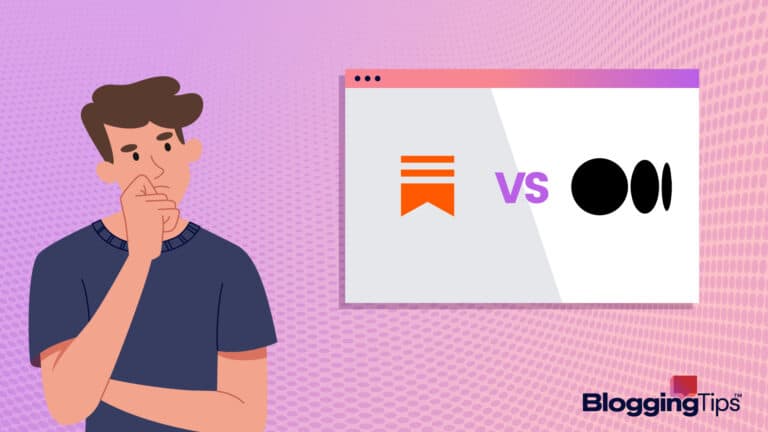Have you heard about WordPress HTTPS and aren’t sure what it’s all about?
In a nutshell, HTTPS is a more secure version of HTTP.
It’s important for a variety of reasons.
For example, a secure domain name keeps credit card information safe on eCommerce websites and subscriber information hidden from hackers on informational blogs.
This article will discuss HTTPS, why it’s important, and how to set it up on your website.
What Is HTTPS?
HTTPS is short for Hypertext Transfer Protocol Secure.
It’s a more secure version of the standard Hypertext Transfer Protocol (or the protocol that defines how the Internet transfers data from server to server).
When you visit a website, your browser sends a request to the server that hosts the website.
The server then sends back the requested information.
With an insecure connection (or an unencrypted connection), this data remains exposed as plain text.
Anyone who intercepts the data can read it.
The data remains encrypted when you connect to a website with a secure connection.
So even if someone does intercept the data, they won’t be able to read it.
Why Do You Need HTTPS?
There are a few reasons you should use a secure connection on your website.
First, a secure connection helps if you collect sensitive information from users, such as credit card numbers or passwords.
It makes it more difficult for hackers to intercept your customer’s data.
Using a secure connection can help you build trust with your website visitors.
If people see that you’re taking security seriously, they’ll feel more comfortable doing business with you.
Second, Google’s search engine optimization algorithm gives preference to websites that use a secure connection in their search results.
You’re more likely to achieve better search results at the search engine if you use a secure connection.
When you visit a website that uses SSL, you’ll see “HTTPS” in the address bar of your web browser.
You might also see “Secure” next to the website’s address, as well as a padlock icon.
Online fraud and hacking are in the news more than ever.
A website visitor knows to look for signs that they’re visiting a secure website.
Even browsers like Google Chrome and Firefox now display a “Not Secure” warning next to the website’s address if it doesn’t use SSL.
Does HTTPS Make My Site Slower?
The short answer is: no, it doesn’t. In the past, however, there was a slight decrease in speed when you switched to a secure connection.
HTTPS technology has come a long way since its early days.
The difference in speed is now negligible.
What’s the Difference Between HTTP and HTTPS?
HTTP and HTTPS are both communication protocols used on the internet.
HTTP is the older of the two and is less secure than HTTPS.
HTTPS uses encryption to protect data sent between a website and a user’s browser, making it much harder for someone to spy on or tamper with the data.
It’s the security factor that makes HTTPS increasingly important, especially for websites that handle sensitive information like credit card numbers, health charts, or other personal data.
How To Move WordPress From HTTP to HTTPS
If you’re running a WordPress website, there are a few steps you need to take to switch from an insecure connection to a secure one.
First, you need to get an SSL certificate.
The SSL certificate encrypts data that flows from your website visitor’s computer to your website and back.
Once you have your SSL certificate, you need to install it on your web server.
If you’re not sure how to do this, your hosting company should be able to help you.
After installing the certificate, ensure that all of your website’s traffic starts the redirection process to use the new HTTPS version.
You can do this by adding a plugin to your WordPress address or by contacting your host’s customer service team.
Once you’ve taken these steps, all of the traffic on your website moves from server to server as encrypted data, making it more secure for you and your users.
Requirements for Using HTTPS/SSL on a WordPress Site
Before you can switch your WordPress site to using a secure connection, there are a few requirements.
You need to have the above-mentioned SSL certificate.
You must use a web hosting server configured to use the SSL certificate.
If you’re not sure if your server meets this criterion, contact your host.
Most WordPress sites use the Apache or NGINX web server software.
Apache is the most popular open-source web server.
NGINX is a high-performance web server that’s also used on some of the largest websites in the world, such as Netflix and Airbnb.
Is SSL needed for WordPress?
While SSL is not required for WordPress, we recommend that you use it.
WordPress is a great option for building a website.
It’s not invulnerable to security threats, though.
Its popularity makes WordPress a target for hackers and other malicious actors.
Why Is My Site Missing an SSL Certificate?
If you’re using WordPress and you don’t have an SSL certificate, it’s likely because your hosting company doesn’t offer one.
Some hosting companies do offer free SSL certificates.
Others don’t provide this free option.
The cost of an SSL certificate varies depending on the type of certificate you purchase and the provider you buy it from.
A basic SSL certificate can cost as little as $20 per year.
A more comprehensive certificate, such as an Extended Validation (EV) SSL certificate, can cost upwards of $100 per year.
If you’re not sure which type of certificate is right for your website, we recommend that you consult with a WordPress developer or security expert.
How Do I Enable HTTPS/SSL on My WordPress Site?
If you’ve decided that you want to use SSL on your WordPress site, there are a few ways to go about it.
The first and most common way is to purchase an SSL certificate from your hosting company.
If they offer this service, they will likely have a WordPress tutorial or article that will walk you through the process of enabling SSL on your WordPress site.
Another way to enable SSL on your WordPress site is to install a plugin.
How to Use HTTPS in WordPress?
It doesn’t take much to use HTTPS in WordPress.
Once the security certificate gets installed in the background, you will now operate your website like normal.
The only time you will see the difference is when logging in.
You will see it now occur over a secure connection.
The same goes for any plugins or themes you might have installed.
Everything should remain the same from your perspective.
Under the hood, however, your website will now automatically encrypt WordPress user data via top-notch WordPress security.
Two ways to see how well your secure site impacts overall performance include using Google Analytics and Google Search Console.
Setting up WordPress To Use HTTPS
You can choose to install your website’s security certificate by using a plugin or by setting everything up manually.
Setup HTTPS in WordPress Using a Plugin
If you want to avoid working with any code, then using a plugin is the best solution.
We recommend the Really Simple SSL plugin.
It’s free and available in the WordPress plugin repository.
Once you’ve installed and activated the plugin, go to your WordPress dashboard.
Find the plugin’s dashboard, go to Settings » SSL page and click on the ‘Enable SSL’ option.
The plugin will automatically detect your settings and configure your website to run over SSL.
You can also change some of the plugin’s settings from the Settings page.
For example, you can enable SSL for mixed content, redirect all traffic to the SSL version of your website, or disable cookies on unsecured connections.
Setup WordPress To Use SSL Manually
While most WordPress hosting providers do support SSL, not all of them make it easy to install.
In some cases, you might need to purchase a WordPress SSL certificate and then manually install it.
The process can be a bit tricky.
If you’re not comfortable doing it yourself, reach out to your hosting provider and see if they can help.
If you are comfortable editing code, then you can set up WordPress to use SSL without a plugin.
You will need to edit your WordPress configuration file and add the following lines of code.
define(‘FORCE_SSL_ADMIN’, true);
// in some setups force HTTPS/SSL for login handled by WordPress itself
if (strpos($_SERVER[‘REQUEST_URI’], ‘wp-login’) !== false) {
$_SERVER[‘HTTPS’] = ‘on’;
}
Save your changes and upload the file back to your server.
You can also add these lines of code in your site’s .htaccess file.
RewriteEngine On
RewriteCond %{SERVER_PORT} 80
RewriteRule ^(.*)$ wordpress-url/$0 [R,L]
Replace WordPress-URL with your actual WordPress site URL
Save your changes and upload the file back to your server.
Conclusion
Setting up WordPress HTTPS doesn’t need to feel threatening or seem hard to do.
If you’re concerned about the technicalities, we recommend using a hosting company that offers a free SSL certificate.
Going with a host that makes it easy helps you get the certificate installed so you can focus on running your business.
Take action today by configuring your site’s SSL certificate.






